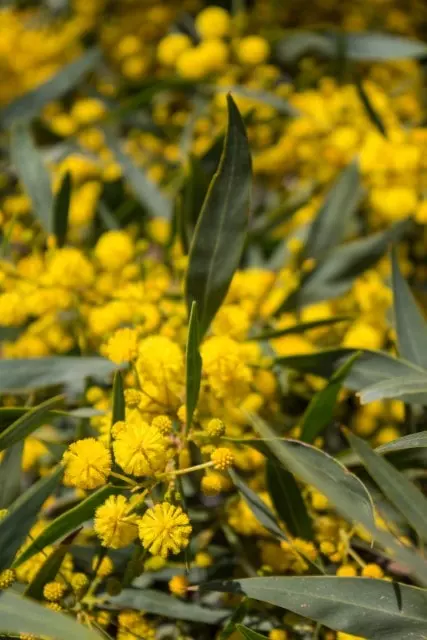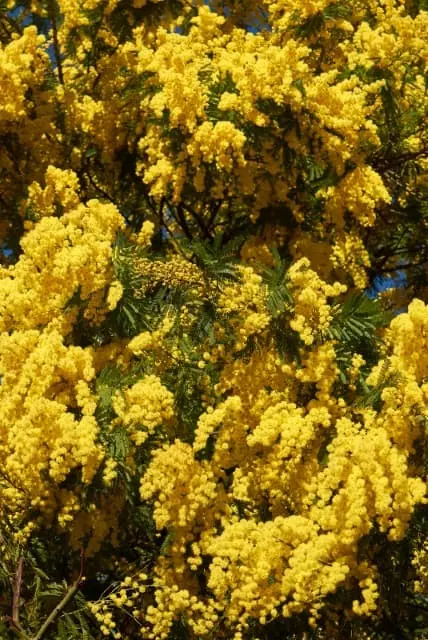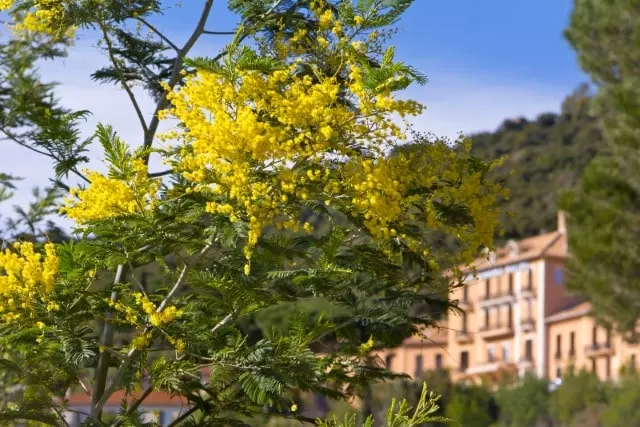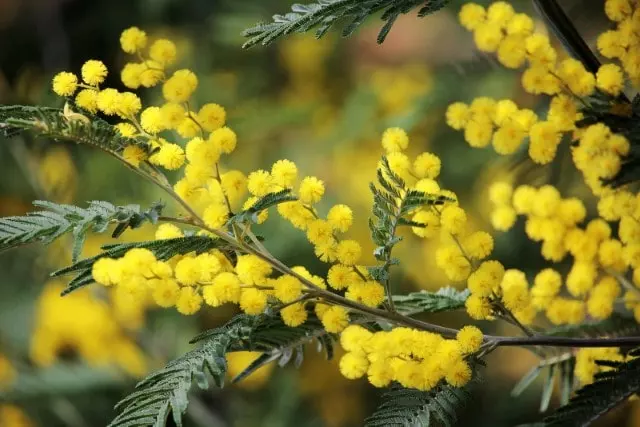The Acacia dealbata is also known as Silver Wattle, Mimosa, or Blue Wattle is a fast-growing tree highly valued by gardening enthusiasts, especially for its beautiful yellow flowers and the intoxicating aroma they give off, capable of brightening up the end of winter in any green space.
If you are interested in having this tree in your home, do not hesitate to continue reading this article on the care of the Acacia dealbata or Silver Wattle.
Table of Contents
Characteristics of Mimosa or Acacia dealbata
Acacia dealbata, commonly called Mimosa or Silver Wattle, is a plant native to Australia. Not to be confused with the shrub also called mimosa or Mimosa pudica, Acacia dealbata is a fast-growing tree that can reach 49 ft (15 meters) in height.
It is an evergreen species, which stand out above all its yellow flowers, in the shape of a striking sphere, which appears between the end of winter and the beginning of spring, spreading its sweet fragrance throughout the garden.
It is a species with a great capacity for multiplication, which can produce new shoots by root expansion, being a tree is considered an invasive species in New Zealand, South Africa, and Portugal, where its cultivation is prohibited due to its enormous potential for growth on the Atlantic coast.

Location for Acacia mimosa or Acacia dealbata
Given its climate of origin, the plant does not tolerate cold. Even mild frosts are very dangerous for this plant, and below 41 °F (5 °C) the mimosa can suffer severe and even lethal damage.
Because of this, although it is an outdoor tree, in climates with cold winters it will be necessary to protect it with thermal fabric or a sheltered location. It is also important to protect the plant from the wind, as its rapid branching means that the branches are not very strong, and are susceptible to breaking in high-intensity storms.
Regarding its light requirements, Acacia dealbata prefers direct sun, as it needs as much light as possible. If you cannot expose it directly, be sure to give it at least one location with as much light as you can.
Watering Mimosa or Silver Wattle
Like many other plants, the Acacia dealbata does not tolerate waterlogging of its roots. In addition, this Acacia withstands the occasional droughts typical of Mediterranean climates without too many problems, although it will grow much better if it is watered frequently to maintain a slight level of humidity in the soil.
It is worth insisting that this should never be confused with waterlogging the soil, as this will most likely cause the roots to rot and the tree to suffer severely and even die.

Soil and Fertilizer for Mimosa or Acacia dealbata
Given its needs, it is easy to imagine that mimosa does not do well in clay soils, which are more prone to waterlogging. It is best to check the drainage capacity of your garden soil before planting by watering and looking to see where water does not accumulate. The ideal is to give it sandy or loamy soil, which should also be enriched with organic matter, such as worm castings or compost 2 or 3 times a year, in spring, summer, and, if the plant needs it, in autumn as well.
Given the great growth capacity of the roots, the fertilizer should not be applied exactly next to the trunk of the tree, but around it, forming a circle of the approximate size of the top of the tree, and is that in the mimosa, branches and roots grow in parallel rhythm.
It is also advisable to mulch at the base of the plant and around it, especially in the summer months, to help the soil better maintain a certain level of humidity.
Pruning Acacia mimosa or Silver Wattle
Pruning Acacia dealbata is not strictly necessary, but it is recommended. Its branches grow so fast that they are not particularly strong, and without control pruning, the tree will be more susceptible to damage when the wind blows. In addition, mimosa branches grow somewhat chaotically, so training pruning will also help to give it a better structure.
Always prune after flowering and apply it to branches with green leaves. Use progressive, non-aggressive pruning that does not upset the balance of the tree, and, as usual, be sure to properly disinfect pruning tools before and after use.

How to Propagate Acacia dealbata
You should propagate your Acacia dealbata either by cuttings or by seed.
- Sowing by seed is done in seedbeds in the normal way, although it is recommended to soak the seeds for no more than 5 seconds in boiling water and then leave them to soak at room temperature for a whole day before sowing, preferably in spring or autumn (Order Seeds here).
- When multiplying by cuttings, it is best to take the stems in summer and plant them indoors with a seedling substrate, maintaining a stable temperature during the 2-3 months it will take for them to root. Using rooting hormone, which you can make yourself at home in a homemade and ecological way, will help in the process.
We hope this article about Acacia dealbata will be useful. We recommend our article about Evergreen Trees for Landscaping.


